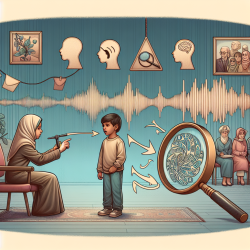Introduction
Physical activity (PA) is essential for the healthy development of children and adolescents. However, participation in physical activities tends to decline with age, especially among girls. The study "Correlations between Physical Activity Participation and the Environment in Children and Adolescents: A Systematic Review and Meta-Analysis Using Ecological Frameworks" provides valuable insights into how various environmental factors influence PA among youth. This blog post will explore these findings and discuss how practitioners can apply them to improve outcomes for children.
Key Findings
The research highlighted several ecological factors that positively correlate with PA in children and adolescents. The meta-analysis revealed an average correlation of r = 0.32, indicating a moderate positive effect. Notably, macro- and chronosystem factors, such as national policies and weather conditions, showed a stronger influence than microsystem factors like family and peer support.
- Individual factors, including age, gender, and psychological characteristics, have a moderate influence on PA.
- Macrosystem factors, such as public policies and socio-cultural contexts, significantly affect PA participation.
- Chronosystem factors, which consider the timeline of change, also play a crucial role.
Practical Applications
For practitioners aiming to enhance PA among children, integrating these findings into practice can be beneficial. Here are some strategies:
- Promote Inclusive Environments: Create inclusive programs that cater to both genders and diverse backgrounds to encourage broader participation.
- Leverage Policy Support: Advocate for policies that provide access to safe and accessible recreational facilities.
- Engage Families and Communities: Encourage family involvement and community support to foster an environment conducive to active lifestyles.
Encouraging Further Research
While the study provides a comprehensive overview, there is still room for further research. Future studies could focus on longitudinal designs to better understand the long-term impacts of ecological factors on PA. Additionally, exploring the effects of technology and digital environments on PA could provide new insights.
Conclusion
Understanding the ecological factors that influence PA in children and adolescents is crucial for developing effective interventions. By applying these insights, practitioners can create supportive environments that promote active lifestyles and improve health outcomes for young people.
To read the original research paper, please follow this link: Correlations between Physical Activity Participation and the Environment in Children and Adolescents: A Systematic Review and Meta-Analysis Using Ecological Frameworks.










